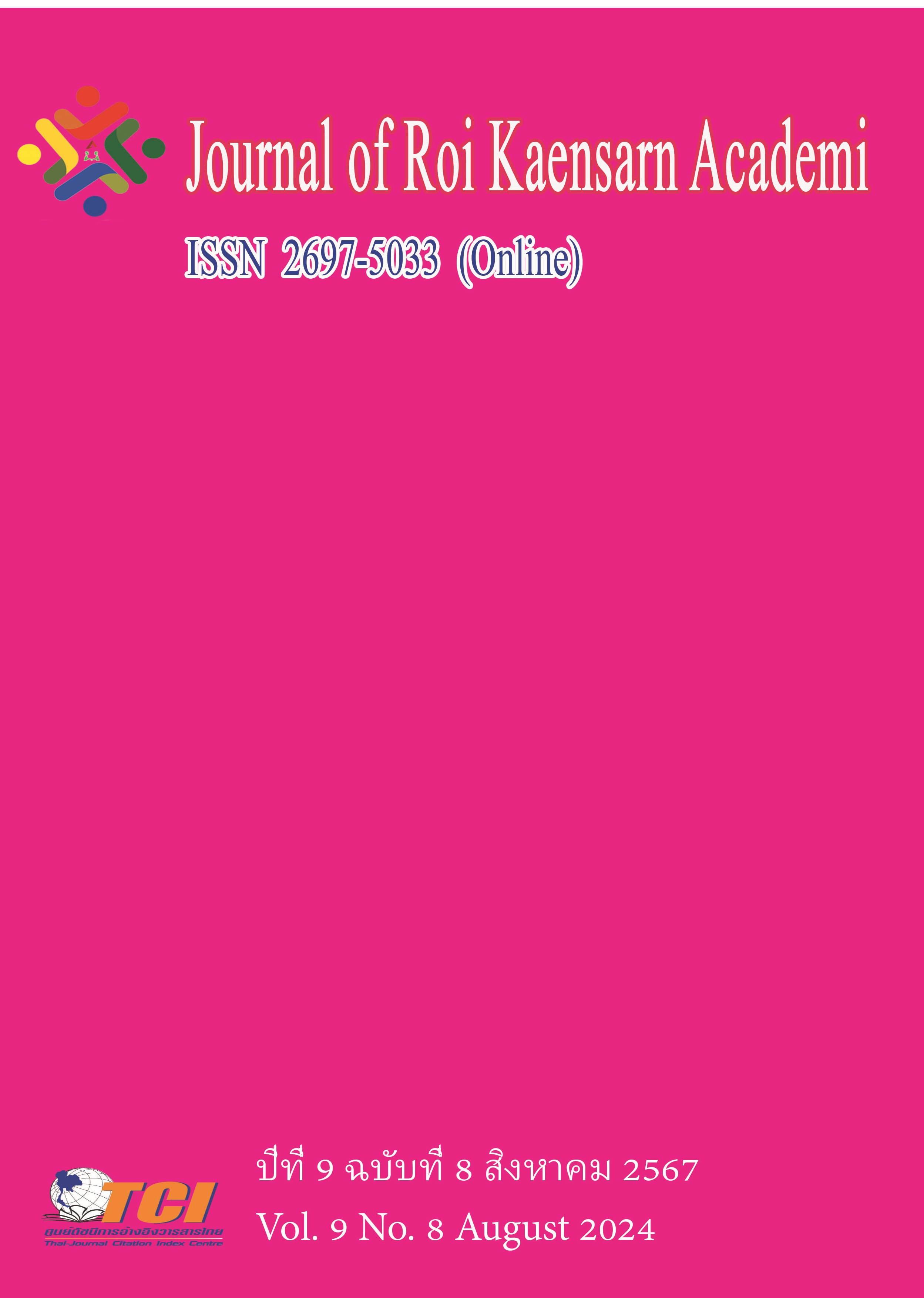ปัจจัยที่มีผลต่อความตั้งใจที่จะใช้งานอุปกรณ์ตรวจสอบคุณภาพการ ประกอบรถยนต์แบบพกพาอัจฉริยะ กรณีศึกษา โรงงานประกอบรถยนต์ แห่งหนึ่งในประเทศไทย
Main Article Content
บทคัดย่อ
การวิจัยนี้มีจุดประสงค์เพื่อศึกษาระดับการยอมรับเทคโนโลยีและศึกษาปัจจัยที่มีอิทธิพลต่อความตั้งใจที่จะใช้งานอุปกรณ์ตรวจสอบคุณภาพการประกอบรถยนต์แบบพกพาอัจฉริยะ (PQAD) ของพนักงานในโรงงานประกอบรถยนต์แห่งหนึ่งในประเทศไทย โดยใช้กรอบแนวคิดบูรณาการทฤษฎีรวมการยอมรับและใช้เทคโนโลยี (UTAUT) ผสานกับทฤษฎีความเหมาะสมระหว่างงานและเทคโนโลยี (TTF) ทำการศึกษากับกลุ่มตัวอย่างซึ่งเป็นพนักงานผู้มีประสบการณ์ทำงานร่วมกับอุปกรณ์ PQAD จำนวน 261 คน โดยสุ่มตัวอย่างแบบ 2 ขั้นตอน ด้วยแบบสอบถามตามมาตราวัดลิเคิร์ท 5 ระดับ (Likert Scale) โดยมีค่าความเชื่อมั่นสัมประสิทธิ์แอลฟาของครอนบาคอยู่ระหว่าง 0.702–0.919 แล้วนำข้อมูลมาวิเคราะห์โดยใช้สถิติเชิงพรรณนา เพื่ออธิบายถึงระดับการยอมรับเทคโนโลยีของกลุ่มตัวอย่าง ได้แก่ ค่าเฉลี่ย ค่าเบี่ยงเบนมาตรฐาน ใช้สถิติเชิงอนุมาน ได้แก่ การหาความสัมพันธ์ด้วยสัมประสิทธิ์สหสัมพันธ์ของเพียร์สันและการวิเคราะห์การถดถอยพหุคูณ เพื่อทดสอบสมมติฐานและวัดปัจจัยที่มีอิทธิพลต่อความตั้งใจที่จะใช้งานอุปกรณ์ PQAD ผลการศึกษาพบว่า พนักงานมีระดับความคิดเห็นของการยอมรับเทคโนโลยีโดยรวมอยู่ในเกณฑ์เห็นด้วยมาก มีค่าเฉลี่ยเท่ากับ 3.99 (S.D. = 0.76) ผลการวิเคราะห์การถดถอยพหุคูณพบว่า ตัวแปรด้านปัจจัยการยอมรับเทคโนโลยีทั้ง 5 ประการ ได้แก่ ความคาดหวังในประสิทธิภาพ ความคาดหวังในความพยายาม อิทธิพลทางสังคม เงื่อนไขการอำนวยความสะดวก ความเหมาะสมระหว่างงานและเทคโนโลยี มีความสัมพันธ์ต่อความตั้งใจที่จะใช้งานอุปกรณ์ PQAD ร้อยละ 86.1 และสามารถอธิบายอิทธิพลของตัวแปรด้านปัจจัยการยอมรับเทคโนโลยีได้ ร้อยละ 73.6 ที่ระดับนัยสำคัญทางสถิติ 0.05 ผลการวิจัยชี้ให้เห็นว่าพนักงานมีการยอมรับเทคโนโลยีอยู่ในระดับสูง โดยอิทธิพลทางสังคมเป็นปัจจัยสำคัญที่สุดในการทำนายความตั้งใจที่จะใช้งาน
Article Details
เอกสารอ้างอิง
กระทรวงดิจิทัลเพื่อเศรษฐกิจและสังคม. (2563). ผลสำรวจการใช้เทคโนโลยีดิจิทัลของภาคอุตสาหกรรม ประจำปี 2563. ออนไลน์. สืบค้นเมื่อ 20 เม.ย. 2566. แหล่งที่มา: https://www.depa.or.th
ธนาคารกรุงไทย. (2566). ส่องทิศทางอุตสาหกรรมชิ้นส่วนยานยนต์ไทยปี 2566-2567. ออนไลน์. สืบค้นเมื่อ 30 มี.ค. 2567. แหล่งที่มา: https://krungthai.com
สุรเดช จองวรรณศิริ. (2563). การจัดการสู่องค์กรนวัตกรรม. ออนไลน์. สืบค้นเมื่อ 31 มี.ค. 2567. แหล่งที่มา: https://ifi.nia.or.th/wp-content/uploads/2020
Abdekhoda, M., Dehnad, A. & Zarei, J. (2022). Factors influencing adoption of e-learning in healthcare: integration of UTAUT and TTF model. BMC Med Inform Decis Mak. 22, 327.
E. S. Nugraha, R. Saputra and D. M. K. Nugraheni. (2018). Understand TTF by Considering the Trust Factor in Adopting M-Banking. 2018 2nd International Conference on Informatics and Computational Sciences (ICICoS), Semarang, Indonesia, 2018, pp. 1- 6.H.
Wang et al., (2020). Understanding consumer acceptance of healthcare wearable devices: An integrated model of UTAUT and TTF. International Journal of Medical Informatics. 139 (2020), 104156.
F Alkhwaldi, Abeer & Alobidyeen, Buthina & Abdulmuhsin, Amir & Al-Okaily, Manaf. (2022). Investigating the antecedents of HRIS adoption in public sector organizations: integration of UTAUT and TTF. International Journal of Organizational Analysis. 10.1108/IJOA-04-2022-3228.
Kang H-J, Han J, Kwon GH. (2022). The Acceptance Behavior of Smart Home Health Care Services in South Korea: An Integrated Model of UTAUT and TTF. International Journal of Environmental Research and Public Health. 19 (20), 13279.
Khaled M.S. Faqih, Mohammed-Issa Riad Mousa Jaradat. (2021). Integrating TTF and UTAUT2 theories to investigate the adoption of augmented reality technology in education: Perspective from a developing country. Technology in Society. 67, 2021, 101787.
Lanhui Cai, Kum Fai Yuen, Xueqin Wang. (2023). Explore public acceptance of autonomous buses: An integrated model of UTAUT, TTF and trust. Travel Behaviour and Society. 31, 2023, 120-130.
Liu J et al., (2023). Attitudes and associated factors of patients’ adoption of patient accessible electronic health records in China — A mixed methods study. DIGITAL HEALTH. 9, 1–17.
Rovinelli, R. J. & Hambleton, R. K. (1977). The use of content specialists in the assessment of criterion-referenced test item validity: Dutch J Edu Res.
Sun J, Guo Y. (2022). A New Destination on the Palm? The Moderating Effect of Travel Anxiety on Digital Tourism Behavior in Extended UTAUT2 and TTF Models. Frontiers in Psychol. July 2022, Volume 13, Article 965655.
T. -T. Chen, Y. -J. Chang, T. -H. Hsu and H. -K. Hsu. (2022). Using UTAUT, TTF, and PR integrating models to evaluate employees’ acceptance and behavioral intention of PHM-based system in the military industry. 2022 IEEE International Conference on Prognostics and Health Management (ICPHM), Detroit (Romulus), MI, USA, 2022, pp. 88-93.
Venkatesh, V., Morris, M. G., Davis, G. B., & Davis, F. D. (2003). User Acceptance of Information Technology: Toward a Unified View. MIS Quarterly. 27 (3), 425–478.
Wan, Liyong & Xie, Shoumei & Shu, Ai. (2020). Toward an Understanding of University Students’ Continued Intention to Use MOOCs: When UTAUT Model Meets TTF Model. SAGE Open. 10. 215824402094185. 10.1177/2158244020941858.
Wu R-Z, Lee J-H, Tian X-F. (2021). Determinants of the Intention to Use Cross-Border Mobile Payments in Korea among Chinese Tourists: An Integrated Perspective of UTAUT2 with TTF and ITM. Journal of Theoretical and Applied Electronic Commerce Research. 16 (5), 1537-1556.
Xin Lin. (2019). Factors Influencing the Chinese Consumers' Usage Intention of Korean Mobile Payment: UTAUT, ISS and TTF Integrated Model. In Proceedings of the 3rd International Conference on E-commerce, E-Business and E-Government (ICEEG '19) Association for Computing Machinery, New York, NY, USA, 40-44.

